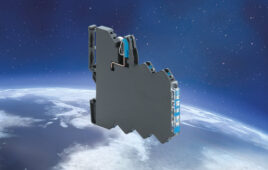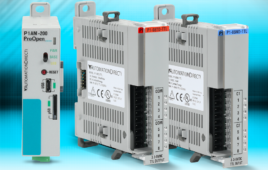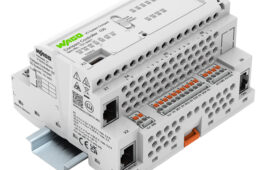For sub-sea level measurement, a pressure sensor’s construction is key to its survival in that environment. Many Remotely Operated Vehicles (ROVs) are lowered into the ocean with a pressure port either installed inside an enclosure or completely exposed to the seawater. As the ROV is submerged, water pressure is exerted on the diaphragm of a pressure sensor. The deeper the system is submerged, the higher the pressure. By calculating salt water density at 1.025 (or 2.5% more dense than fresh water at 4° C) a correlation between pressure and output signal can be made to measure equipment depth.
For example, when a pressure sensor is packaged with a pressure range of 0-5075 PSI (350 Bar) and a 4-20 mA output signal, the pressure sensor will read 0 PSI or 4 mA at the surface. When the sensor is submerged with the equipment, the pressure will increase along with the linear output signal up to 20 mA at a depth of approximately 12,000 feet (3657.6 meters). This is calculated by: (5075 PSI x 27.68 inches of water column x 1.025 density)/12 inches = approx. 12,000 feet
Such pressure sensors need certain mechanical considerations to survive the corrosive environment. The AST 4000 Series of Pressure Sensors have 316L stainless steel wetted parts including the pressure-sensing element, housing and electrical connection to survive sub-sea environments. Even deep in the ocean where oxygen levels are low and water movement continuous, pitting and crevices of the sensors are minimal due to its construction.
The sensors have a one-piece 316L construction and a thick diaphragm membrane without any welds or O-rings. The diaphragm is thick, leading to a long life, as there is no potential leak path, and only one material to consider.

Pressure sensors that employ a separate diaphragm than the pressure port must ensure wetted materials of the pressure port are compatible with stainless steel.
Electrical termination is also a factor for sub-sea applications. These sensors use a wet, pluggable style connector that can withstand 10,000 PSI of pressure. Made of 316L material, it completely seals the electronics of the pressure sensor. The threaded connector is made with gold contacts and glass reinforced epoxy to maintain media compatibility and long-term use.
American Sensor Technologies, Inc.
www.astsensors.com
::Design World::
Filed Under: Sensors (pressure), Off highway • construction • agriculture, SENSORS, TEST & MEASUREMENT





Tell Us What You Think!